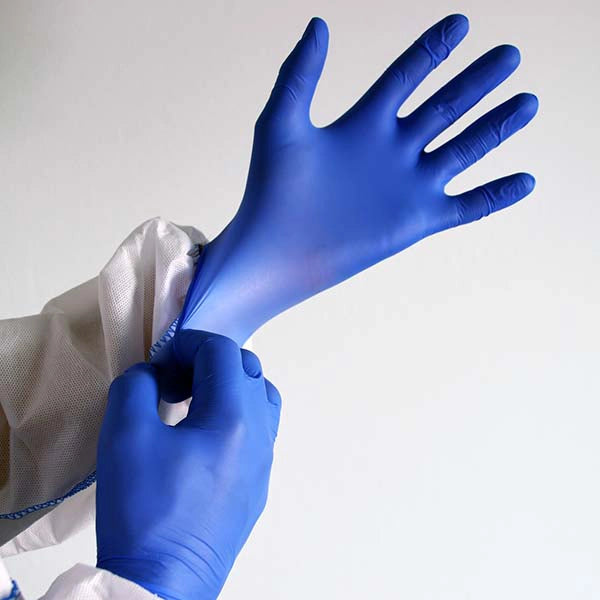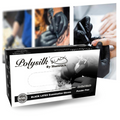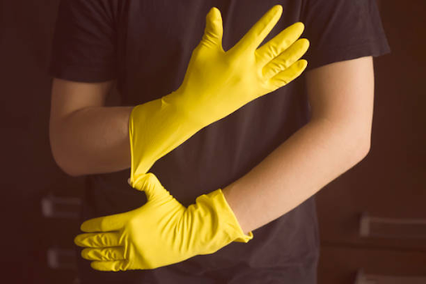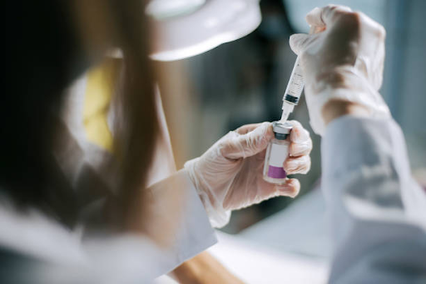Sanitizing our hands is basic in preventing the spread of viruses, but what about gloves? Gloves are still an effective method of protection from certain organisms and toxins. Caring for your gloves is an essential part of their value.
If they are not properly taken care of, your pair of gloves will become ineffective in the face of some rigorous use. They must be washed and cleaned to maintain their integrity. Failure to care for your gloves will also lead to them becoming unusable and rendered useless.
The Centers for Disease Control and Prevention (CDC) recommend proper disposal of all protective equipment (PPE) used in healthcare settings.
Gloves are among the types of PPE that should be disinfected or if reusable, cleaned and disinfected after each use to prevent any cross-contamination from occurring.
How can you best care for your gloves? The following article provides some guidelines for handling and storing clean rubber gloves.
How to wash or clean reusable gloves
Gloves are worn for protection, so cleaning them can extend their lifespan and protect against contamination. Here is a step-by-step process to help you clean your gloves whether they are vinyl, nitrile, or latex gloves:
- Washing the outside of the gloves with soap or a mild detergent and hot water while they are still on your hands can help keep them sanitary. Rub the gloves together or with a cloth to remove dirt, germs, and other organic materials. Thoroughly rinse the gloves under running water.
- Take off the gloves and wash your hands with soap and water.
- Soak the gloves inside out in a mixture of soap and water for a few minutes.
- Hang the gloves to dry in a well-ventilated location. Make sure they are completely dry before folding them and putting them away.
- Keep the clean rubber gloves in a dry place to prevent mildew growth.
When Not To Wash Gloves
- To protect workers from infections, each individual should have his/her own pair of disposable gloves. So, wash only your personal disposable gloves.
- Gloves should be discarded after wearing for any length of time in contact with blood and bodily fluids, or extremely soiled items.
- Dispose of a rubber glove when it becomes discolored, cracked, or visibly punctured, or ripped.
How to disinfect rubber gloves
Disinfectants are agents that destroy microorganisms on inanimate objects. They work by destroying the nucleic acids and proteins that make up all microorganisms, but should only be used on objects, never on the skin.
- After washing your gloves, be it latex gloves or what, make sure to dry them completely before proceeding to sanitation or disinfection.
- Clean the outside of rubber gloves with a sanitizing or disinfecting product to kill any germs left behind by your hands. Before using such products, read the label carefully to ensure that it is safe for use on the material of your gloves and follow all directions.
- Be sure to wash your hands thoroughly after.
Important Reminder on Disinfecting Gloves:
- The Environmental Protection Agency has a list of registered disinfectants, but you should know that "EPA-registered surface disinfectants, including surface wipes, SHOULD NOT be applied on your skin or ingested." For safety reasons, do not wipe down the inside of the gloves with the disinfectant as it may cause skin irritations.
How to sanitize rubber gloves
Sanitizers are agents used to rapidly reduce the number of disease-causing bacteria on inanimate objects in a short period of time. The process of sanitizing is basically the same as cleaning, and can be used to clean dishes, hard surfaces, and skin.
To sanitize your gloves, you can use the same process laid out above on washing your glove with mild detergent or sterilize them with an ethanol solution using the process below.
Sanitizers vs Disinfectants
Sanitizers are used at concentrations that kill microorganisms but don't leave behind residue that can harm food or cause skin irritation; disinfectants are used at much higher concentrations to kill microorganisms, but may also leave harmful residues on food and skin.
How to sterilize latex gloves
Sterile latex gloves are often used in healthcare services to prevent the dangerous transmission of microorganisms upon contact. However, gloves can be sterilized at home for tasks in which the risk of infection is not great.
- Prepare your 70% ethanol solution or make one if you don't have one. If you have already purchased a 70 percent ethanol solution for this task, skip this step.
If you do not have an ethanol solution available, prepare it by mixing 100% ethanol with distilled water in a ratio of 7:3. Pour the 70% solution into a clean spray bottle using a funnel to avoid spilling.
- Before you begin to sterilize latex gloves, wash your hands thoroughly with soap and water. Make sure you wash your fingers and wrist well, and avoid touching any surface other than the gloves.
- Spray the outside of the glove thoroughly, then use your fingers to turn it inside out. Repeat this procedure until all areas of both gloves have been covered with ethanol.
- After you sanitize the latex gloves, you can put them on to begin your task. But be careful not to touch any surface or ground before doing the task.
How to store reusable gloves
- Keep the washed gloves in a clean, dry area that has been disinfected to reduce the risk of contamination.
- Gloves should be stored in a well-ventilated area, away from direct sunlight.
- Check gloves before wearing them. Punctures, discoloration, or tears indicate a potential problem
Can You Put Rubber Gloves In The Dishwasher?
It is not recommended to put rubber gloves in the dishwasher. The high heat and strong detergents used in dishwashers can damage the rubber material, causing it to degrade or lose its flexibility. To clean rubber gloves, it is better to wash them by hand with warm water and mild soap, then allow them to air dry completely.
Where Can I Find Washable Gloves?
If you’re looking for high-quality washable gloves, gloves.com is the best option. They offer a wide variety of gloves that are durable and easy to clean. Plus, you can enjoy a 50% discount on your orders, making it an affordable choice for all your glove needs.
Visit gloves.com today to take advantage of this great offer and find the perfect washable gloves for any task.
How to Clean Rubber Gloves: Frequently Asked Questions
Can rubber gloves be washed?
Yes, rubber gloves can be washed. To clean them, rinse the gloves with warm water to remove any dirt or debris. Apply a mild detergent and gently rub the gloves together to create a lather. Rinse thoroughly with warm water to remove all soap residue. Turn the gloves inside out and repeat the washing process. Allow the gloves to air dry completely before storing them.
What dissolves rubber gloves?
Rubber gloves can be dissolved or damaged by certain chemicals and solvents. Common substances that can dissolve or degrade rubber include acetone, paint thinners, strong acids and bases, and certain oils and petroleum-based products. It is important to avoid exposing rubber gloves to these substances to maintain their integrity and longevity.
Can you use hand sanitizer on rubber gloves?
It is not recommended to use hand sanitizer on rubber gloves. Hand sanitizers contain alcohol and other chemicals that can degrade the material of the gloves, reducing their effectiveness and durability. If you need to sanitize your gloves, it is better to wash them with mild soap and water, as described above.






